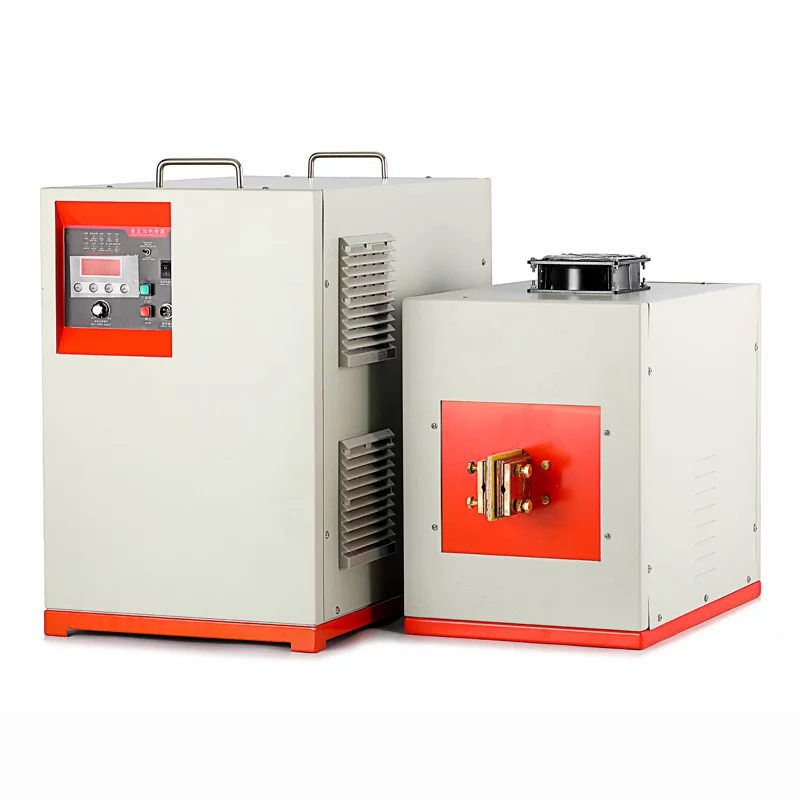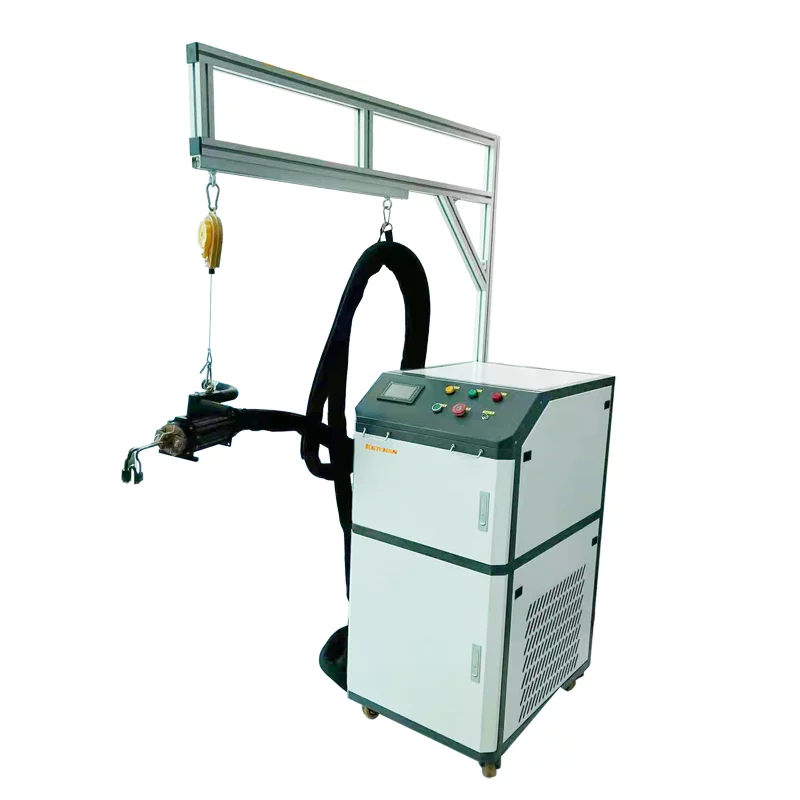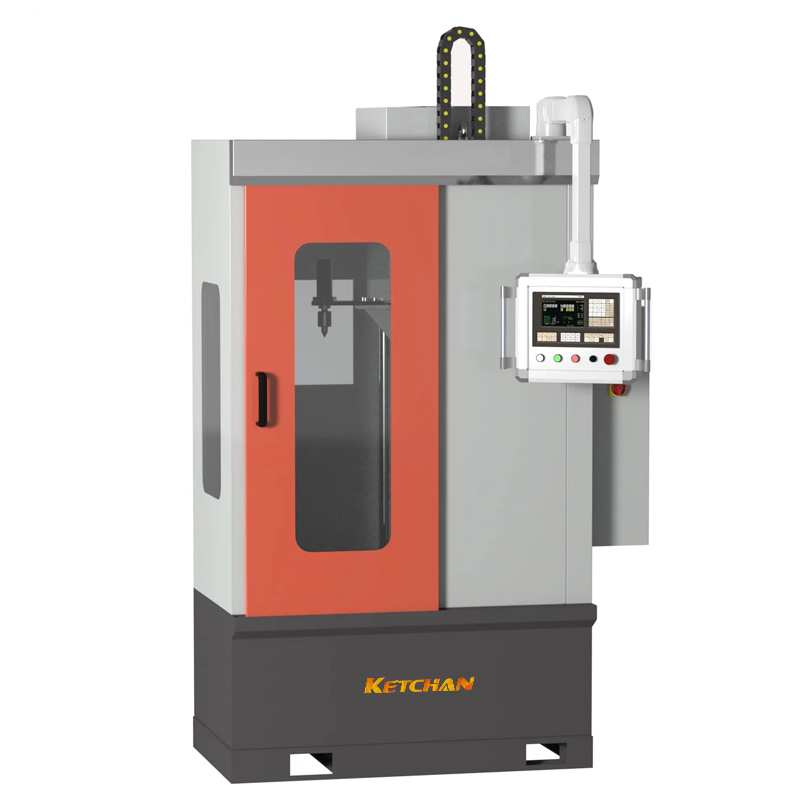A.The induction tempering technology of piston rod
The quenching and tempering process of piston rod used to be heated by ordinary box-type or trolley resistance furnace, which not only consumes a lot of time and manpower in the actual production but also makes it difficult to meet the delivery time and product quality of customers. With the development trend of modern industry, the application of induction heating technology in heat treatment is more and more extensive, and the application scope is also expanding. Induction heating equipment can not only achieve the goal of energy saving, emission reduction, high quality, and high efficiency but also make the product quality and cost control in the market at a certain level. The emphasis of this paper is to compare and analyze the structure and performance of the piston rod after quenching and tempering with the trolley resistance furnace and intermediate frequency induction heating equipment.
B. Chemical composition of 42CrMo
42CrMo is a widely used material for piston rod.42CrMo steel is ultra-high strength steel, with high strength and toughness, good hardenability, no obvious tempering brittleness, small deformation during quenching, quenched and tempered treatment after higher fatigue limit and anti-multiple impact ability, low temperature impact toughness, high temperature creep strength and durable strength. The chemical composition of 42CrMo steel is shown in Table 1.
C. Quenching and tempering process of 42CrMo piston rod
For 42CrMo piston rod (as shown in FIG. 1), intermediate frequency induction tempering process and ordinary trolley resistance furnace tempering process were developed respectively.
Table 1: Quenching and tempering process of 42CrMo piston rod (mass fraction %)
1. Medium frequency induction tempering process
According to the size of the actual part reasonable choice the induction coil diameter is 90 mm, quenching induction coil 6, tempering induction coil five, use 500 kW intermediate frequency power supply, quenching tempering USES 300 kW intermediate frequency power supply, cooling with 7.5 kW centrifugal pump driven hydraulic circle, and use a 50 t water cooling tower, ensure the water temperature is not more than 40 ℃, up-down material for pneumatic device and the proximity switch, realization of automatic feeding and discharge.
Figure 1. Schematic diagram of 42CrMo piston rod
Through automatic feeding → induction heating → cooling (quenching) → induction heating (tempering) → automatic feeding and the continuous operation of the production line to complete the entire quenching and tempering process.
(1) Automatic feeding will put the parts on the top of the feeding table manually and send them into the feeding device by rotation.
(2) Through the steady operation of the conveying device, the parts are sent to the quenching induction coil, and the parts are preheated → temperature measurement → temperature rise → temperature measurement temperature control is carried out through the stationary infrared thermometer, so as to reach the quenching temperature and enter the high-pressure water spraying device for cooling and complete the quenching process.
(3) After tempering, the cooled parts will be fed into the tempering induction coil for tempering through the steady and quick operation of the conveying device, and then into the blanking area.
(4) Automatic blanking parts enter the automatic blanking platform for cooling.
The intermediate frequency induction tempering process curve is shown in Figure 2.
Figure 2: Medium frequency induction tempering curve of 42CrMo piston rod
In the actual production process, the quenching temperature is 860℃ measured by a fixed infrared thermometer during quenching. The intermediate frequency is 2.5khz, the power is 310kW, the tempering temperature is 600℃, the intermediate frequency is 2.7khz, the power is 105kW, and the speed is 4min/m.
2.General trolley resistance furnace tempering process
Choose a 150 kW length is 6 m trolley resistance furnace for quenching and tempering, trolley resistance furnace preheating first, after the parts into the furnace, heating to the quenching temperature heat preservation, and then quenching into 8% sodium chloride aqueous solution, with warm water (due to equipment limited, there is no such a big oil pool), after waiting for the cooling, hardness test, determine its resistance furnace, tempering temperature in the car. The process curve is shown in Figure 3.
FIG. 3: Resistance furnace tempering process curve of 42CrMo piston rod trolley
During the tempering process, it should be noted that the tempering and heat preservation time should be sufficient to make the workpiece fully austenitized; Must be pre-cooled during quenching, in order to prevent the workpiece cracking; Check whether the temperature-control of the furnace is accurate, put the workpiece into the center of the furnace smoothly, make the workpiece evenly heated, to get the ideal temperature control structure.
D. Test data and analysis
1. The hardness
After quenched and tempered medium frequency induction and trolley resistance furnace, we in the middle of the piston rod in a hardness test, hardness test using a desktop Rockwell hardness tester, figure 4 for the sample after the medium frequency induction hardening, length of 50 mm, figure 5 is the sample after conditioning treatment resistance furnace, a lathe processing plane, with sand. The hardness data after two different tempering treatments are shown in Table 2.
Figure 4: Intermediate frequency induction conditioning parts
Figure 5: Parts of a trolley resistance furnace quenched and tempered
Table 2: Hardness data of parts after different tempering
2. Metallographic structure
At 1/2 of the sample radius, the samples were corroded with 4% alcohol nitrate solution, and the metallographic structures of the samples after two different tempering treatments were observed with a 500-fold metallographic microscope.FIG. 6 shows the metallographic structure after medium frequency induction quenching and tempering treatment, and FIG. 7 shows the metallographic structure after tempering treatment of resistance furnace on the trolley.
Figure 6: Metallographic structure after medium frequency induction conditioning treatment
FIG. 7: Metallographic structure of a trolley resistance furnace after quenching and tempering
3. Analysis of test results
(1) Piston rod has better mechanical properties and hardness uniformity after intermediate frequency induction tempering treatment, which is mainly due to fast induction heating speed, short heat preservation time, and smaller grain size.
(2) can be seen from the microstructure: two different ways of quenched and tempered treatment received for tempering orbit microstructure matrix and a small amount of ferrite, sorbate grain size level to level 4, make the material has high strength, and have good plasticity, is to ensure that the piston rod after quenched and tempered with excellent comprehensive performance.
(3) Medium frequency induction tempering heating speed is fast, which can double the productivity of heating equipment, and can form a continuous production line with other process equipment; Short heating time, high efficiency, induction heating equipment efficiency can reach 60% ~ 70%, resistance furnace heating efficiency is only about 40%; Induction heating furnace, due to the small loss of heat dissipation, the temperature of the workshop is greatly reduced, induction heating does not produce smoke and smoke, the working environment of the workshop is purified, and the working conditions of the workshop are improved; The heating time is short and the tendency of oxidation and decarburization is small.
E. Conclusion
From the above test, it can be seen that the medium frequency induction quenching and tempering treatment is adopted, with fast heating speed and short heat preservation time. After the tempering treatment, the material has a fine grain, high strength, and basically no decarburization layer. With the mechanical transmission device, the piston rod can realize the whole uniform heating, so that it is not easy to deformation after quenching, without straightening can achieve higher bending.
Intermediate frequency induction heating quenching and tempering diagram















